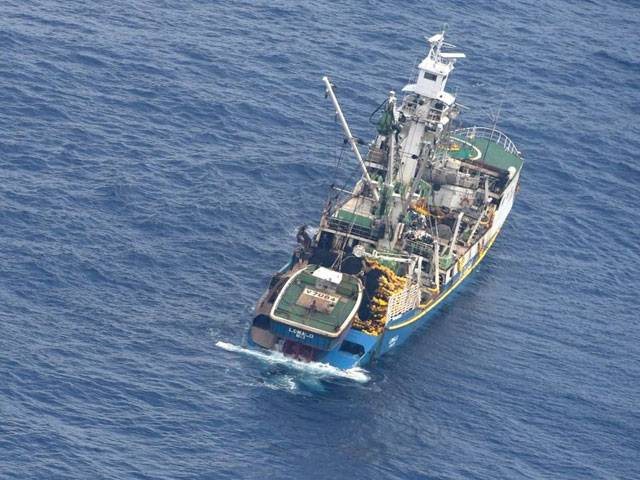WELLINGTON - An aerial search for survivors from a ferry that sank in the remote Pacific two weeks ago was suspended Friday with more than 80 people still missing, many of them children, officials said.
"The Kiribati government has suspended aerial searches for survivors of the ferry MV Butiraoi," Rescue Coordination Centre New Zealand said in a statement.
The Butiraoi set off from Kiribati's Nonouti island on January 18 on a two-day voyage with 88 people aboard, including 23 children and teenagers.
Authorities raised the alarm eight days later after hearing nothing from the vessel, sparking an international search effort.
A dinghy with seven survivors, including a 14-year-old girl, was found on Sunday, after which rescuers concentrated their efforts on trying to find a life raft that was launched as the ferry was sinking.
But subsequent searches have only located scattered debris.
The rescue centre said the four aircraft involved in the search - from New Zealand, Australia and the United States - would return to their home countries.
Kiribati-based boats would continue to look for survivors, although the aerial sweeps were considered the best chance of finding anyone alive in a vast oceanic search area that is bigger than Italy.
The sinking is believed to be the worst maritime disaster in Kiribati's history and has devastated the island nation of about 110,000 people.
Former president Anote Tong said Nonouti, population 2,000, had lost its "youngest and brightest" in the tragedy.
The youngsters are believed to have been travelling to the Kiribati capital South Tarawa for the start of a new school term.
Ferries are a lifeline in Kiribati, which consists of 33 atolls and reefs scattered over an area the size of the continental United States.
Former Kiribati prime minister Ieremia Tabai, who represents Nonouti, said the Butiraoi offered a popular free service to the capital.
However, local authorities said the 17.5-metre (57.4-foot) wooden catamaran ran aground and underwent repairs to its propeller shaft before its fateful last voyage.
The rescue coordination centre said it sank on the same day it set off, although the search did not begin until January 26, eight days later.
Tabai has called for an independent inquiry to examine the delay in raising the alarm and why the vessel was allowed to sail without basic safety equipment.
Kiribati's last major ferry disaster was in 2009, when the Uean Te Rao II sank with the loss of 35 lives.
A subsequent investigation found the vessel was unseaworthy and not carrying an emergency beacon, flares or sufficient life jackets.
It also found safety standards on the Kiribati domestic fleet were insufficiently enforced.






